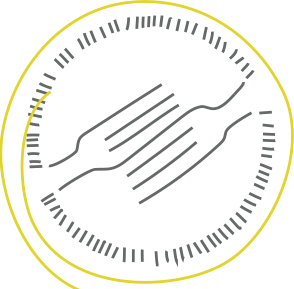Bottled Water is a Total Bust
I ditched bottled water long ago, only turning to it in an absolute pinch. It was a lecture at my kids school several years back when folks from Long Island Clean Water Partnership, Suffolk County Water Authority and the New York State Department of Environmental Conservation came to town to talk about what I call liquid life.
Like many, I always felt safer going with what was in a bottle. Hey, where I live, farmland is abundant and with that, potential water contamination from pesticide run off is a reality. But after an evening listening to the folks on the panel, I was convinced that plain ‘ole water from a tap is the better option!
According to the Natural Resources Defense Council, bottled water may very well be a total bust:
“NRDC conducted a four-year review of the bottled water industry and the safety standards that govern it, including a comparison of national bottled water rules with national tap water rules, and independent testing of over 1,000 bottles of water. Our conclusion is that there is no assurance that just because water comes out of a bottle it is any cleaner or safer than water from the tap. And in fact, an estimated 25 percent or more of bottled water is really just tap water in a bottle -- sometimes further treated, sometimes not.”
And to add insult to injury, the environmental, physical and economic consequences of gulping water in a disposable bottle are staggering. The water experts at GRACE Communications Foundation, an organization that increases public awareness about food, water and energy systems and how the three intersect, sent me this great resource on Why You Should Never Buy Disposable Water Bottles Again and here are a few facts to whet your appetite for more:
- Even though the U.S. has some of the safest tap water in the world, it has the largest market for bottled water—roughly 30 billion bottles per year
- Bottled water costs 300-2,000 times more than tap water
- Drinking 8 glasses of tap water per day costs roughly $0.50/year while the same consumption of bottled water costs about $1,400/year
- 17 million barrels of oil are used to produce disposable water bottles each year (and that’s enough to fuel 1 million cars for an entire year)
- Producing bottled water requires up to 2,000 times the energy cost of producing tap water
- More than 80% of water bottles end up in landfills (while some are recycled many also end up littering roadsides and waterways)
(Click here for more scary facts)
When it comes to water in plastic, I urge people to go green, meaning get yourself a stainless steel bottle like Klean Kanteen or a BPA-free plastic option and use and re-use it. Filling it up is free! And, here are a few more things you can do to make a difference in your health and the health of our planet:
- Take a stand—sign the Take Back the Tap pledge compliments of Food and Water Watch, the organization that works to ensure that your food, water and fish are safe to eat
- Get the skinny on your personal watershed and how you can help protect your local water supply
- Learn about your water with the Consumer Confidence Reports, federally mandated annual drinking water quality reports
- Check out Environmental Working Group's Water Filter Buying Guide
- Understand your personal water footprint with GRACE's Water Footprint Calculator
- Get some tips on how to conserve water
- Advocate for Water Filling Stations and learn how your community or organization can promote tap water
- If you have to buy bottled water, buy it better by learning about its source and how its quality is protected. Never be shy to call the company to gather facts!

